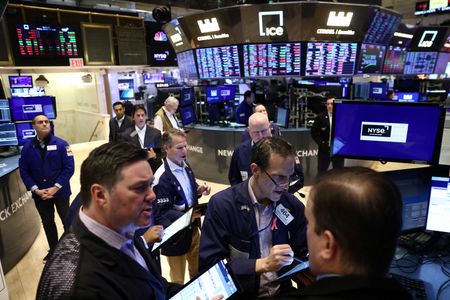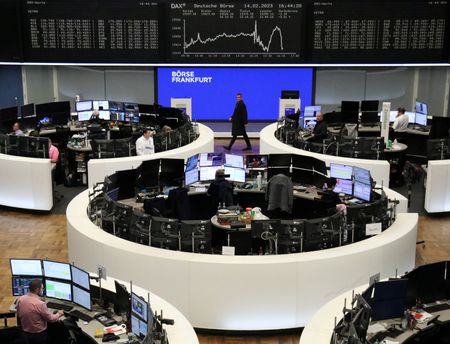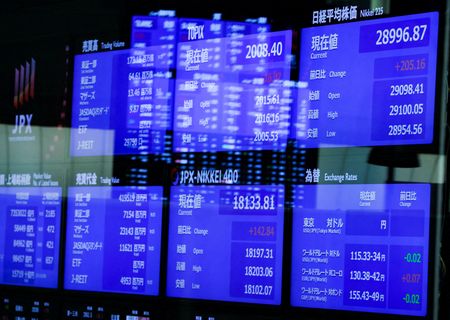By Sinéad Carew
NEW YORK (Reuters) – Wall Street’s three major indexes closed higher on Wednesday and the dollar rose along with U.S. Treasury yields after U.S. retail sales data for January rose by the most in nearly two years, suggesting a resilient economy while fueling concerns about further interest rate hikes.
After two straight monthly declines, the Commerce Department said retail sales surged 3.0% last month, the largest increase since March 2021, after declining by an unrevised 1.1% in December.
Paired with Tuesday’s data showing a monthly inflation pick-up in January, evidence of an increase in consumer spending fed worries the U.S. Federal Reserve would keep increasing rates for longer than some investors had hoped.
“It’s all about the Fed. As figures like retail sales come out quite strong, this is more food for the Fed to keep raising rates, maybe at reduced pace, but, at the very least, to keep them higher for longer,” said Bruce Zaro, managing director at Granite Wealth Management.
The Dow Jones Industrial Average rose 38.78 points, or 0.11%, to 34,128.05, the S&P 500 gained 11.47 points, or 0.28%, to 4,147.6 and the Nasdaq Composite added 110.45 points, or 0.92%, to 12,070.59.
MSCI’s gauge of stocks across the globe gained 0.04% but has risen almost 8% so far this year.
Some investors were doubtful the gains can continue.
“It gets very difficult to justify further upside because we’re looking at earnings estimates still coming down and I also don’t think we’re out of the woods with the recession risk. I think a lot of the strength is transitory,” said Jimmy Chang, chief investment officer at Rockefeller Global Family Office.
The dollar index hit its highest level since Jan. 6 after the strong U.S. retail sales and inflation data.
The index, which measures the greenback against a basket of major currencies, was recently up 0.562%, after rising as much as 0.86%. The euro was down 0.42% at $1.069.
The Japanese yen weakened 0.77% versus the greenback to 134.14 per dollar, while Sterling was last trading at $1.2035, down 1.11% on the day.
In U.S. Treasuries, benchmark 10-year notes were up 3.8 basis points to 3.799%, from 3.761% late on Tuesday. The 30-year bond was last up 3.2 basis points to yield 3.8329%, from 3.801%. The 2-year note was last was down 0.2 basis points to yield 4.6203%, from 4.622%.
“The Fed’s been very clear that they believe they have a ways to go with rates, and that it would be data-dependent,” said Michael Lorizio, senior fixed income trader at Manulife Investment Management.
“As the data has evolved, now the market is coming back towards the Fed’s predications, because the data has been supportive of that,” he added.
Oil prices finished lower but bounced off session lows as traders discounted a build in U.S. crude stocks due to a data adjustment, while forecasts for higher global demand were supportive.
U.S. crude settled down 0.59% at $78.59 per barrel and Brent finished at $85.38, down 0.23% on the day.
Gold prices hit their lowest since early January with pressure from the stronger dollar and strong U.S. data.
Spot gold dropped 0.9% to $1,838.12 an ounce. U.S. gold futures fell 0.91% to $1,837.10 an ounce.
(Reporting by Sinéad Carew and Herbert Lash in New York, Matt Tracy and Lucia Mutikani in Washington, Marc Jones in London, Xie Yu in Hong Kong and Alex Lawler in London; Editing by Kim Coghill, John Stonestreet, David Gregorio and Nick Macfie)



